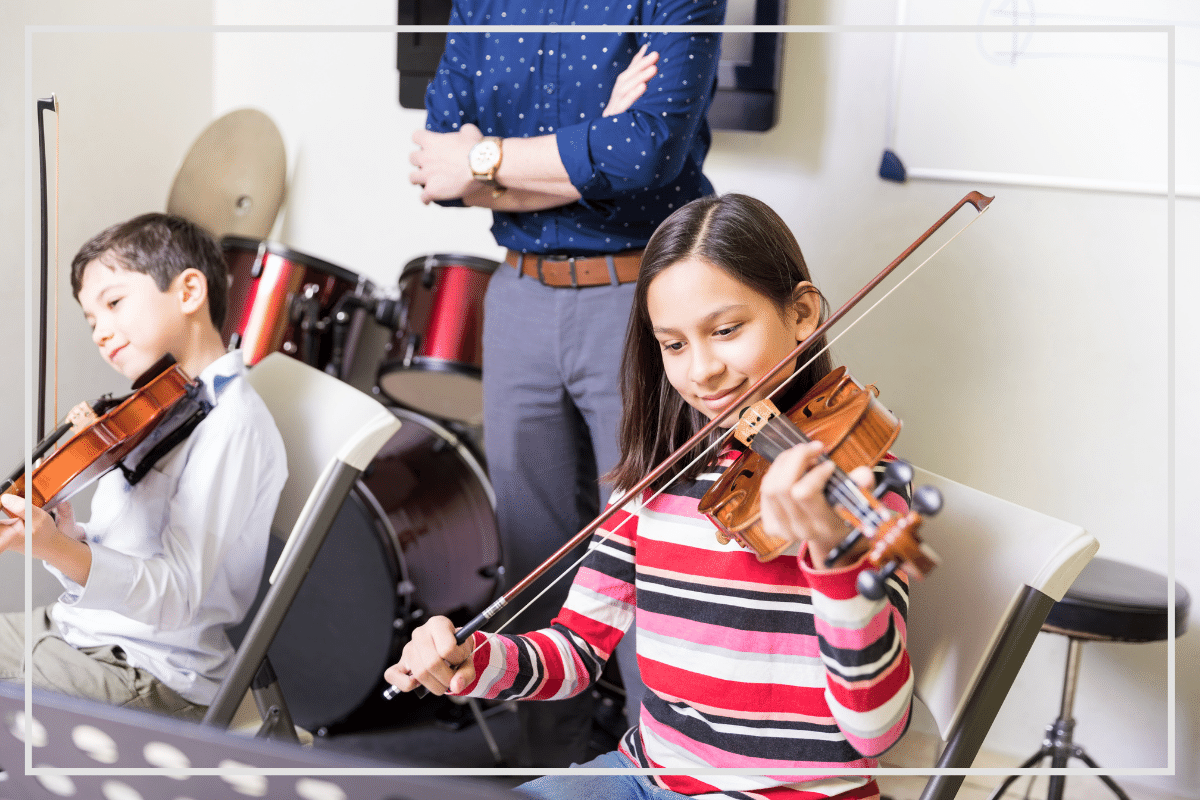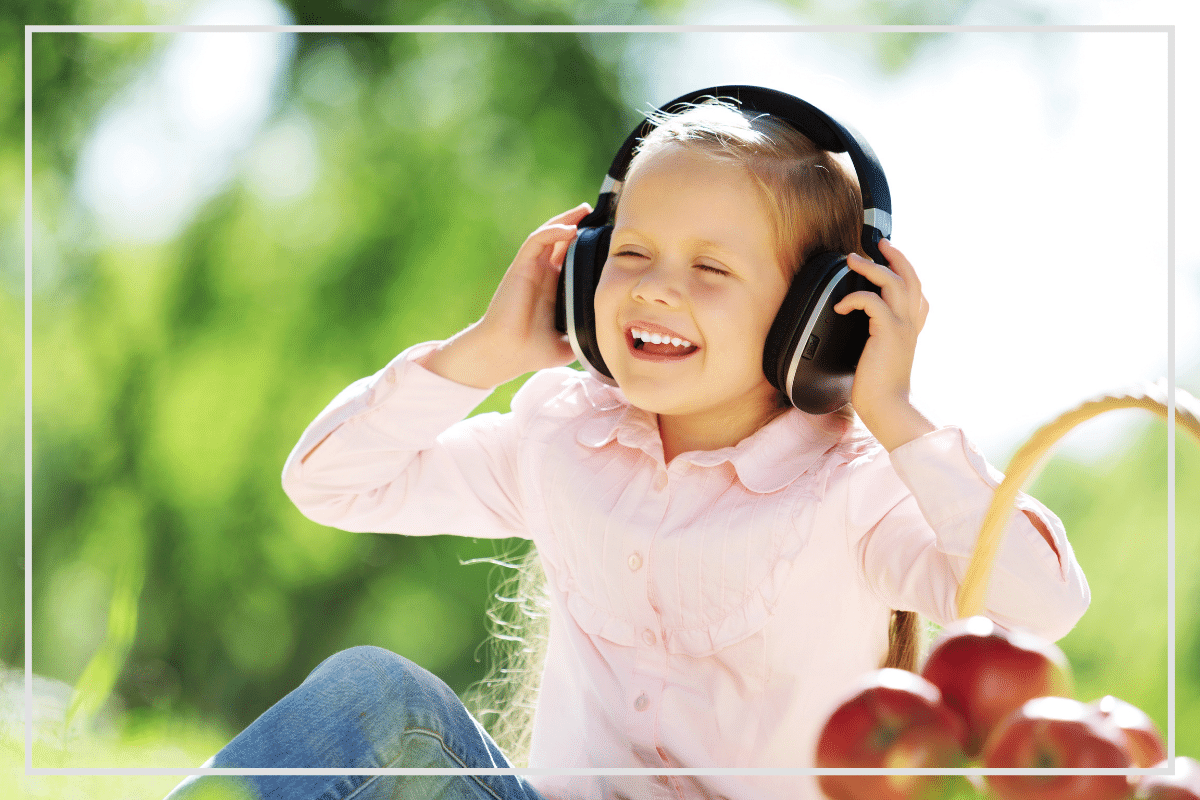- Is There A Sound That Only Kids Can Hear
1.1 What Sounds Are High Frequency - What Is the Normal Human Hearing Range
- High Pitch Sound Only Kids Can Hear
3.1 The Highest Frequency a Child Can Hear - Can You Hear Sounds Only Kids Can Hear
4.1 Sounds That We Can't Hear As We Get Older - Why Can't Adults Hear High Pitched Sounds
5.1 Age-Related High Frequency Hearing Loss
5.2 Other Causes - Other Sounds You Probably Can't Hear
- Test Your High Frequency Hearing With Decibel Pro App
As we get older, we gain certain abilities and lose others. Our hearing is one of the senses commonly affected by the passing of time. With age, our hearing loses its sharpness and this causes us to no longer hear certain sounds or frequencies.
This begs the question: Is there any specific sound only kids can hear and adults cannot? Read on to find out all about the sound only kids can hear.
Is There a Sound that Only Kids Can Hear?
When talking about sound only kids can hear, there is one theory that keeps popping up. This theory says that adults above the age of 25 cannot hear a sound called the 'mosquito tone' which is a sound at a frequency of 17.4 kHz. If you want a chance to test this sound out for yourself, you can find it here.
However, this ‘mosquito tone’ theory is not bulletproof. When it comes to noise only kids can hear, things are a little more complex. You will certainly find some kids or youngsters that are unable to hear sounds at that 17.4 kHz frequency and adults that can.
What Sounds Are High Frequency?
Sounds at frequencies above 2000 hertz are considered high-frequency sounds.
Here are a few examples of common high-frequency sounds:
- mosquito buzz
- screaming
- squeaking
- glass breaking
- nails on a chalkboard
What Is the Normal Human Hearing Range?
The normal human hearing range is the range of frequencies that humans can perceive and hear. Frequency refers to the number of occurrences of a repeating event per unit of time and it is measured in hertz (Hz). It is not to be confused with the hearing range that measures the amplitude of a sound. That one is from 0 dB (the quietest sound) to 140 dB (the threshold of pain).
Humans can hear frequencies between 20 and 20,000 Hz. Speech and language frequencies, the ones we are most sensitive to, range from 250 to 8000 Hz.
Not all humans have the same hearing range. Some can detect and hear higher frequencies than others while many incur a gradual loss of sensitivity to higher frequencies especially as they age.
High-Pitch Sound Only Kids Can Hear
Our hearing, like many of our senses, works best when we are young. The older we get, the less our hearing perceives higher-pitched sounds.
The average hearing frequency range of a child is from 20 to 20,000 Hz. Sounds with frequencies above 20,000 hertz are known as ultrasound. They cannot be perceived by humans because they are too high-pitched. Only some animals can hear ultrasound. For instance, dogs can hear sounds as high as 50,000 Hz and bats can hear ultrasonic sounds of up to 110,000 Hz.
After the age of 25, this normal range of up to 20,000 Hz drops. Then, we are able to hear sounds with frequencies between 20 and 14,400 Hz. This happens because of naturally developing age-related hearing loss.
This is the main reason why most adults cannot hear the Internet-famous ‘mosquito tone’ that has a frequency of 17,400 Hz. This 17.4 kHz sound is a high-pitch sound only kids can hear.
The Highest Frequency a Child Can Hear
The highest frequency a child can hear under normal conditions is 20,000 Hz. That is the maximum limit of human hearing when it comes to frequency. And since children have very sharp hearing, they are easily able to hear such high-frequency sounds.
Adults lose their ability to hear sounds above 15,000 Hz starting at the age of about 25.
In laboratory conditions, the human hearing frequency range can go up to 28,000 Hz or as low as 12 Hz.
Can You Hear a Sound Only Kids Can Hear?
As we get older, so do our senses. Our hearing is primarily affected by age. However, it can also be affected by environmental conditions like prolonged exposure to loud noises or by medical conditions.
To test whether you can hear the sound frequencies associated with your age, click on the videos below:
- 8,000 Hz – you should be able to easily hear this sound no matter your age
- 12,000 Hz – you should be able to hear this sound if you are under 50
- 15,000 Hz – you should be able to hear this sound if you are under 25
- 17,400 Hz – you probably won’t be able to hear this sound if you are over the age of 18
If you were able to hear the sound frequencies associated with your age group, your hearing is normal. If you were not, you may suffer from hearing damage or hearing loss. You should consider taking additional hearing tests. To do this, you can use an app like Decibel Pro or schedule an appointment with an audiologist.
Sounds That We Can’t Hear As We Get Older
The sounds that we can’t hear as we get older are high-pitched sounds. This is especially noticeable in environments that have a lot of background noise.
When our hearing declines, we lose our ability to hear high-frequency sounds like mosquito buzzes, and distinguish things like:
- women’s and children’s voices
- consonant-heavy words (words containing s, t, k, p, and f)
- high-pitched doorbells or appliance buzzers
Hearing loss is progressive. Therefore, the older we get, the lower the frequency range of sounds we can hear gets.
Why Can’t Adults Hear High-Pitched Sounds?
Adults cannot hear high-pitched sounds because after the age of 25 our ability to hear high-pitched frequencies fades. High-pitched sounds above 15 kHz are typically sounds only kids can hear.
The medical term for this process of our hearing fading is presbycusis. The medical explanation is that the cells in our inner ears age and deteriorate over time. This causes the inner ear to be less sensitive and lose its ability to perceive high-pitched sounds.
In addition to this naturally-occurring hearing loss, some adults cannot hear high-pitched sounds due to other conditions.
Age-Related High-Frequency Hearing Loss
Presbycusis or age-related hearing loss is progressive and irreversible. It commonly affects both ears and is caused by the degeneration of the cochlea or other structures of the inner ear or auditory nerves. It affects 1 in 3 persons over the age of 65 and leads to the inability to hear high-pitched sounds.
Genetics and aging are believed to be the cause of presbycusis, together with environmental noise exposure. There is no known prevention for this condition and the treatment is by hearing aid or surgical implant.
Other Causes
Among the other reasons why adults cannot hear high-pitched sounds, we can count:
- noise-induced hearing loss
- medication
- diseases
Noise-induced hearing loss can be caused by a single event of exposure to very loud noise or by constant exposure to noise levels over 85 decibels.
Medication-induced hearing loss can be caused by certain types of drugs referred to as ototoxic. That means harmful to your hearing health. These may include large quantities of aspirin, chemotherapy treatment drugs, and aminoglycoside antibiotics.
Medical conditions such as Meniere’s disease can affect the inner ear and cause adults to lose their ability to hear high-pitched sounds. This condition usually occurs between the ages of 30-50. In children, untreated chronic otitis media (or middle ear infection) can lead to hearing loss.

Other Sounds You Probably Can’t Hear
Apart from the high-frequency 17.4 kHz sound only kids can hear, here are a few other sounds you probably can’t hear:
- ultrasonic sounds like ultrasonic finger friction that occurs when you gently rub your thumb and index finger together. This action is used for testing a device called a bat detector, that converts ultrasonic bat echolocation sounds into noise humans can hear.
- infrasonic calls that elephants use to communicate with each other that are as low as 14 to 16 Hz
- music specifically designed for cats (yes, that exists!)
- a sound included in the Beatles’ song Sgt. Pepper's Lonely Hearts Club Band. This 15,000-hertz whistling noise is designed for the band’s canine fans and can be heard right after the last chord of the song, just after the 5-minute mark.
Test Your High-Frequency Hearing with Decibel Pro App
Decibel Pro is a reliable sound level app that you can use to monitor noise levels in your home and work environment to avoid dangerous exposure and hearing damage. For instance, you can use it to check that the volume on your sound system speakers or TV does not exceed the recommended level of 85 decibels.
Decibel Pro also includes a hearing test feature. Use it to regularly test your hearing and identify any hearing damage or hearing loss early on.
To learn more about the Decibel app, click here.



